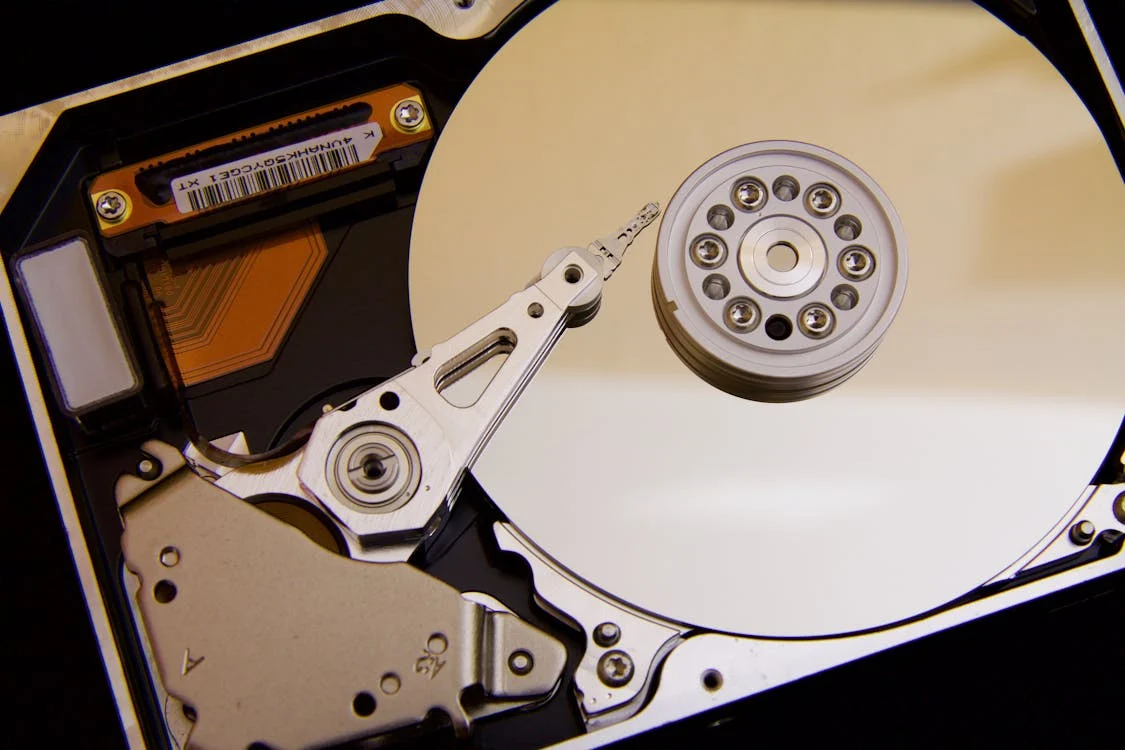Introduction
HDD is a fundamental component in computers, serving as the main storage medium for operating systems, software applications, and personal files. HDDs have been a staple in computing for decades, known for their ability to provide substantial storage capacities at a relatively low cost.
The Evolution of HDD Technology
Over the years, HDD technology has seen significant advancements, including increases in storage capacity, improvements in data transfer rates, and reductions in physical size. Today’s HDDs can store multiple terabytes (TB) of data and are essential components in a variety of electronic devices.
Importance and Relevance of HDDs in Modern Computing
Despite the rise of Solid-State Drives (SSDs), HDDs remain relevant due to their cost-effectiveness and high storage capacities. Understanding HDDs’ function and benefits helps in making informed decisions about data storage solutions.
Technical Specifications
Platters and Spindles
An HDD consists of one or more platters made of aluminum, glass, or ceramic, coated with a magnetic material.
Read/Write Heads
Attached to the ends of actuator arms, read/write heads hover just above the platter surfaces, reading and writing data magnetically. There is usually one head for each platter surface.
Actuator Arm
The actuator arm moves the read/write heads across the platters’ surfaces to access different data tracks. Precision and speed of the actuator arm are crucial for the drive’s overall performance.
Data Storage Mechanism
Magnetic Storage Principles
HDDs store data by magnetizing tiny areas on the platter surface. Each area represents a bit of data, with its magnetic orientation indicating a binary value (0 or 1).
Data Encoding Methods
Data on HDDs is encoded using various methods, such as Modified Frequency Modulation (MFM), Run-Length Limited (RLL), and more recently, Perpendicular Magnetic Recording (PMR) and Shingled Magnetic Recording (SMR).
Performance Metrics
RPM (Revolutions Per Minute)
The speed at which the platters spin, measured in RPM, affects the HDD’s performance. Higher RPMs result in faster data access times and transfer rates.
Data Transfer Rates
Data transfer rates indicate how quickly data can be read from or written to the HDD. These rates are typically measured in megabytes per second (MB/s) and vary based on the drive’s design and technology.
Access Time
Access time is the duration it takes for the HDD to locate and retrieve data. It includes seek time (time to position the read/write head over the correct track) and rotational latency (time waiting for the desired sector to spin under the head).
Types and Categories

3.5-inch Drives
Primarily used in desktop computers and servers, 3.5-inch HDDs offer larger storage capacities and higher performance due to their larger platters and higher RPMs.
2.5-inch Drives
Commonly found in laptops, gaming consoles, and portable external drives, 2.5-inch HDDs are more compact but generally offer lower storage capacities and performance compared to 3.5-inch drives.
1.8-inch Drives
These smaller drives were once popular in ultraportable devices and some MP3 players.
By Interface
SATA (Serial ATA)
The most common interface for connecting HDDs to modern computers, SATA drives offer good performance and ease of installation, supporting data transfer rates up to 6 Gb/s.
SAS (Serial Attached SCSI)
Used mainly in enterprise environments, SAS drives provide higher reliability, faster data transfer rates, and better scalability compared to SATA drives.
By Usage
Desktop HDDs
Designed for everyday use in personal computers, these HDDs balance performance, capacity, and cost. They are suitable for general computing tasks, gaming, and media storage.
Laptop HDDs
Smaller and more power-efficient, laptop HDDs are designed to fit into the compact form factors of notebooks. They offer good performance and moderate storage capacities.
Enterprise HDDs
They offer higher capacities, faster data transfer rates, and longer warranties compared to consumer-grade drives.
Applications
Personal Computers
HDDs are the primary storage devices in many personal computers, providing ample space for operating systems, software applications, and user data.
Enterprise Servers
In enterprise environments, HDDs are used to store vast amounts of data, including databases, virtual machines, and application data. They are often configured in RAID (Redundant Array of Independent Disks) arrays for improved performance and redundancy.
Data Centers
Data centers rely on high-capacity HDDs to store and manage massive datasets. HDDs are used in conjunction with SSDs to balance cost and performance in tiered storage solutions.
Gaming Consoles
Modern gaming consoles use HDDs to store games, updates, and multimedia content. The large storage capacities of HDDs allow gamers to install and access multiple games and files.
Benefits
Cost-Effectiveness
HDDs offer a lower cost per gigabyte compared to SSDs, making them an economical choice for users who need large storage capacities.
Large Storage Capacity
HDDs can store several terabytes of data, making them suitable for applications that require extensive storage space, such as video editing, data archiving, and server applications.
Durability and Reliability
While SSDs are known for their durability, modern HDDs are also designed to withstand physical shocks and vibrations, making them reliable for everyday use and long-term data storage.
Challenges and Limitations

Slower Speed Compared to SSDs
HDDs are inherently slower than SSDs due to their mechanical components. This results in longer boot times, slower file transfers, and reduced overall system performance.
Mechanical Failure Risks
As mechanical devices, HDDs

